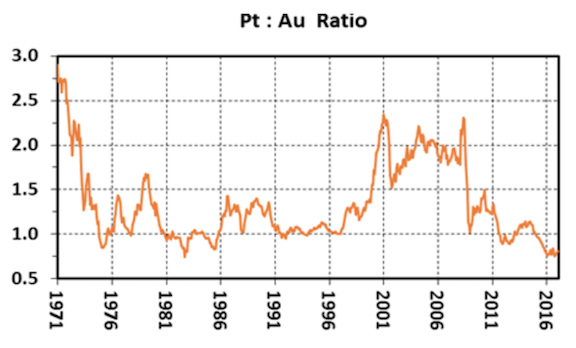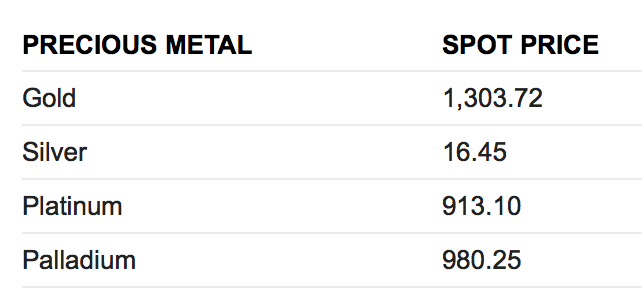- Posts
- 25,980
- Likes
- 27,616
ulackfocus
·Platinum (Pt) is one of the rarest elements on Earth. Only 190 - 200 tons of platinum are mined each year versus 2500 - 3300 tons of gold. When you add in the fact that 14 tons of raw material must be used to produce 1 measly ounce of pure platinum, and it takes 50 different steps to extract it from its ore, you can see why it costs so much. Only 20% of the world's supply of platinum goes into jewelry and watches. Because platinum does not oxidize, is insoluble in hydrochloric & nitric acid, and has an extremely high melting point of 1772˚C there are many industrial applications for it. 70% goes into catalytic converters for automobiles. The remaining 10% is used in varying items like pacemakers, cancer medications, iPods, fuel nozzles in jet engines, and even missile nose cones. When alloyed with cobalt it can be made into a powerful magnet.
platinum ore nugget:

Platinum is part of a group of elements including rhodium, palladium, iridium, osmium, and ruthenium called Platinum Group Metals. When the Spaniards came across it in South America in the early 1700's they called it platina meaning "little silver". The pre-Columbian Indians had previously used it for centuries. King Louis XV of France declared it the only metal fit for a king because of its scarcity. Today it is mined in Columbia & Peru, the Ural Mountains of Russia, Western Canada & the Northwestern US, and South Africa. Occasionally it is a welcome byproduct of nickel ore processing in Ontario.
Platinum is a prized material for watch cases since it doesn't stain or tarnish. It also has a beautiful silvery white color that doesn't require plating. It has incredible durability - if you scratch it, the metal is only displaced like a dent; it isn't removed off the case. Platinum alloys are 95% pure (.950) compared to the 75% purity (.750) of 18K gold or 58.5% purity (.585) of 14K gold or even the 92.5% purity (.925) of most silver jewelry. Of course there are other factors that make a platinum watch expensive. Special polycrystalline tools are needed since it is the hardest of all precious metals and would break the tools used to produce gold cases. Platinum also requires slower milling speeds and lower pressure to minimize friction which would cause the surface to "orange peel" or stipple. Juan-Carlos Torres, CEO of Vacheron Constantin, told WatchTime magazine "you just look at a platinum dial and you ruin it". He estimates that "you have to work on 500 platinum dials to get 150 right." It can take 5 times longer to make a platinum dial than a gold one, and 3 times longer to produce a platinum case over a gold case.

As stratospheric as the price of platinum can be, it is still highly sought after. The U.S. is the biggest market, accounting for 23% of world-wide sales. Almost 3/4 of platinum watches made sell for $25,000 or more and over 2 dozen brands offer products made with the metal.
* photo & quote credits to WatchTime magazine
platinum ore nugget:

Platinum is part of a group of elements including rhodium, palladium, iridium, osmium, and ruthenium called Platinum Group Metals. When the Spaniards came across it in South America in the early 1700's they called it platina meaning "little silver". The pre-Columbian Indians had previously used it for centuries. King Louis XV of France declared it the only metal fit for a king because of its scarcity. Today it is mined in Columbia & Peru, the Ural Mountains of Russia, Western Canada & the Northwestern US, and South Africa. Occasionally it is a welcome byproduct of nickel ore processing in Ontario.
Platinum is a prized material for watch cases since it doesn't stain or tarnish. It also has a beautiful silvery white color that doesn't require plating. It has incredible durability - if you scratch it, the metal is only displaced like a dent; it isn't removed off the case. Platinum alloys are 95% pure (.950) compared to the 75% purity (.750) of 18K gold or 58.5% purity (.585) of 14K gold or even the 92.5% purity (.925) of most silver jewelry. Of course there are other factors that make a platinum watch expensive. Special polycrystalline tools are needed since it is the hardest of all precious metals and would break the tools used to produce gold cases. Platinum also requires slower milling speeds and lower pressure to minimize friction which would cause the surface to "orange peel" or stipple. Juan-Carlos Torres, CEO of Vacheron Constantin, told WatchTime magazine "you just look at a platinum dial and you ruin it". He estimates that "you have to work on 500 platinum dials to get 150 right." It can take 5 times longer to make a platinum dial than a gold one, and 3 times longer to produce a platinum case over a gold case.

As stratospheric as the price of platinum can be, it is still highly sought after. The U.S. is the biggest market, accounting for 23% of world-wide sales. Almost 3/4 of platinum watches made sell for $25,000 or more and over 2 dozen brands offer products made with the metal.
* photo & quote credits to WatchTime magazine


